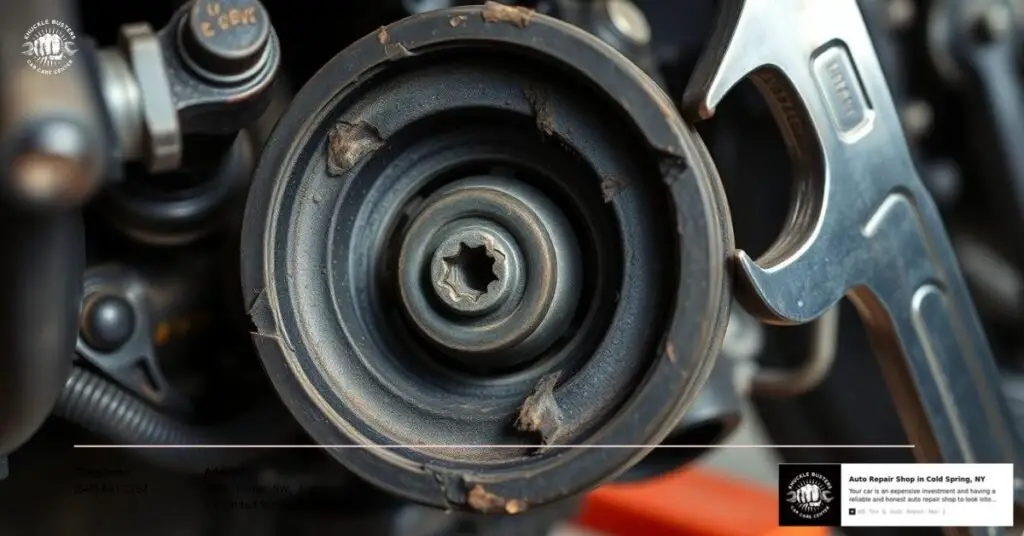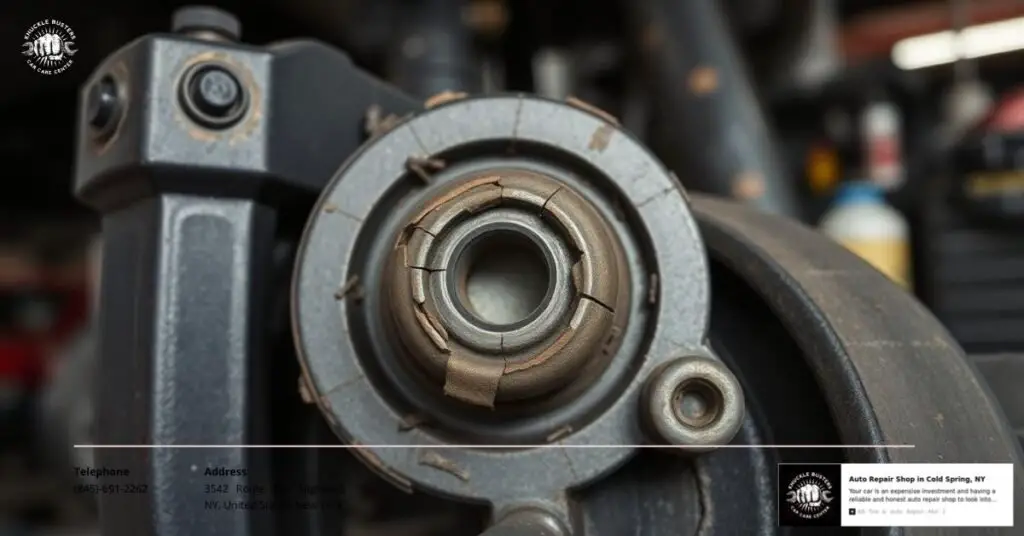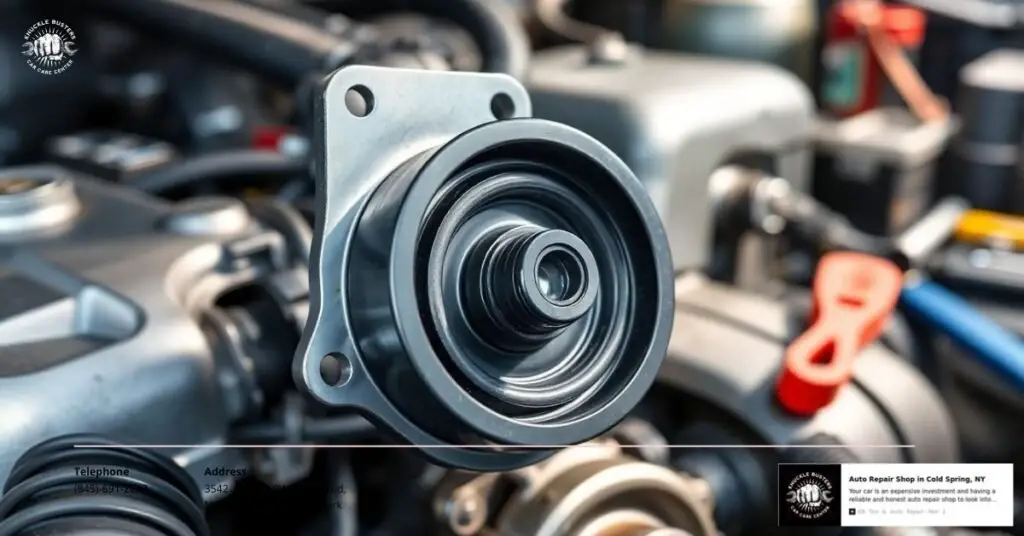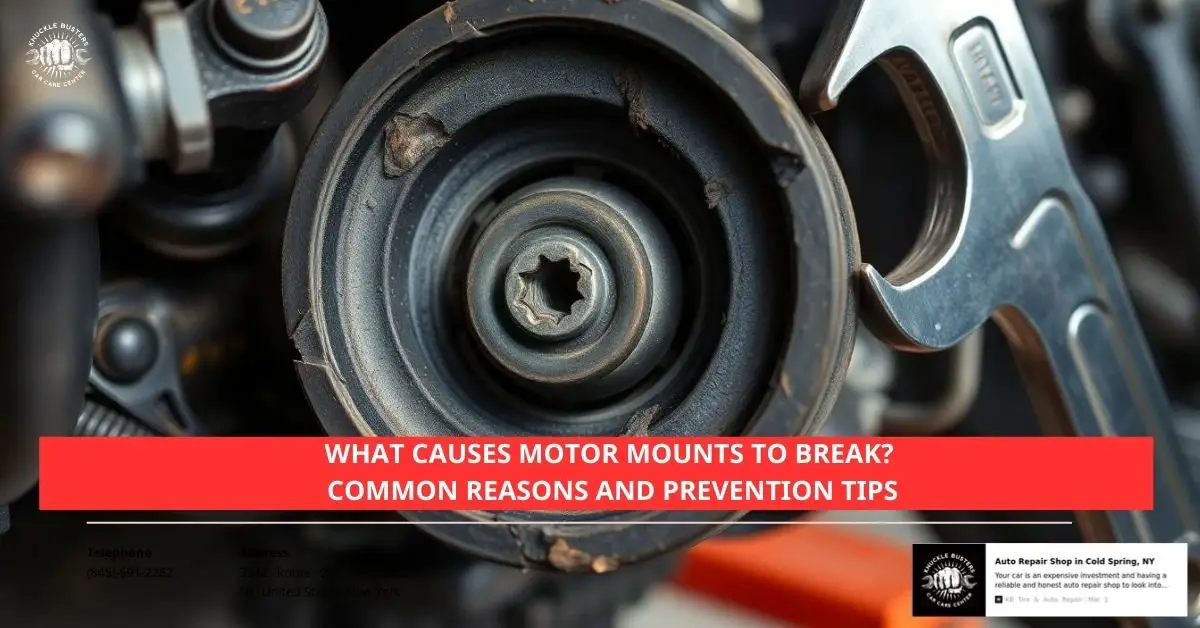- Motor mounts secure the engine to the vehicle’s frame, reducing vibrations, noise, and preventing engine misalignment.
- Common causes of motor mount failure include wear and tear, faulty installation, poor-quality materials, exposure to fluids or extreme temperatures, and impact damage from accidents.
- Driving habits, such as aggressive acceleration or high engine torque, can accelerate motor mount wear and lead to premature failure.
- Signs of failing motor mounts include excessive vibrations, clanking noises, visible damage, engine movement, and potential damage to surrounding components.
- Regular vehicle inspections, high-quality replacement parts, and promptly addressing engine issues or fluid leaks can help prevent motor mount damage and costly repairs.
Motor mounts might not grab our attention until something goes wrong, but they’re essential for keeping our engines steady and our rides smooth. These small yet crucial components secure the engine to the vehicle’s frame while absorbing vibrations. When they fail, though, we’re left with excessive vibrations, strange noises, and even alignment issues.
So, what makes motor mounts break? It’s not always just age or wear. Factors like engine torque, misalignment, or even oil leaks can weaken them over time. Sometimes, the quality of the materials or improper installation can speed up their failure. Understanding these causes helps us spot potential problems before they turn into costly repairs.
By learning what puts motor mounts under stress, we can take steps to protect them and keep our vehicles running smoothly. Let’s explore the common culprits behind broken motor mounts and how they impact our driving experience.
What Are Motor Mounts?
Motor mounts, also known as engine mounts, are essential components that secure the engine to a vehicle’s frame. They help stabilize engine movements while minimizing vibrations and noise during operation.
The Role of Motor Mounts in a Vehicle
Motor mounts anchor the engine to the vehicle’s frame and isolate engine vibrations from the cabin. They absorb shocks caused by engine movements, ensuring a quieter and more comfortable ride. Without motor mounts, vibrations from the engine would transfer directly to the chassis, leading to discomfort and potential structural issues. Properly functioning motor mounts also prevent engine misalignment, protecting surrounding components from excessive stress.
Types of Motor Mounts
- Rubber Mounts: Common in most vehicles, these mounts use a steel structure paired with rubber for vibration isolation. They’re durable but can deteriorate over time due to heat and engine fluids.
- Hydraulic Mounts: Found in modern vehicles, these mounts combine a rubber exterior with a hydraulic fluid-filled core for enhanced vibration damping.
- Active Mounts: Equipped with electronic components, these high-performance mounts adapt to driving conditions, offering superior vibration control in luxury and sports cars.
Common Causes of Motor Mount Failure

Motor mounts can break due to several factors that compromise their durability and functionality. Recognizing these causes helps address issues before they escalate.
Wear and Tear Over Time
Regular use gradually weakens motor mounts, particularly the rubber components. Constant exposure to engine vibrations and road conditions causes the rubber to lose elasticity and develop cracks. High-mileage vehicles often experience this issue as prolonged usage reduces the mount’s ability to absorb shock effectively.
Faulty Installation or Poor Quality
Improper installation leads to uneven stress and misalignment, weakening motor mounts prematurely. Low-quality mounts made from substandard materials, such as brittle rubber or weak metal, deteriorate faster and fail under normal engine movements. Ensuring proper alignment and opting for high-quality materials minimizes these risks.
Exposure to Extreme Temperatures or Fluids
Extreme temperature fluctuations cause the rubber in motor mounts to harden or crack, reducing their effectiveness. Oil or fluid leaks directly onto mounts can soften and swell the rubber, leading to premature failure. Addressing leaks promptly prevents mounts from degrading due to such exposure.
Accidents or Impact Damage
Collisions or minor fender-benders may damage motor mounts even if exterior vehicle damage appears minimal. The energy transfer during accidents can crack mounts, impacting their structural integrity. For used cars or after accidents, a professional inspection ensures mounts remain intact.
Driving Habits and Engine Stress
Driving habits such as aggressive acceleration, over-revving gears, or sudden clutch engagements strain motor mounts. Excessive engine torque, especially in manual transmissions, accelerates wear and can contribute to tearing. Adopting smoother driving techniques extends the lifespan of motor mounts.
Signs of a Broken Motor Mount

Detecting a faulty motor mount early helps prevent further damage and costly repairs. Specific signs indicate when motor mounts may no longer function as intended.
Unusual Vibrations
Excessive vibrations from the engine are a key indicator of broken motor mounts. Damaged mounts lose their ability to absorb vibrations, causing the engine to shake noticeably during idling or acceleration. These vibrations can also spread through the vehicle’s cabin, creating discomfort and increasing strain on other components.
Clanking or Rattling Noises
Broken motor mounts often result in unusual noises such as clanking, banging, or thudding. These sounds typically occur when the engine shifts or moves due to failed mounts during acceleration, deceleration, or gear changes. Loose or worn-out mounts might amplify these noises, simulating metal-on-metal contact.
Visible Damage or Misalignment
Inspecting motor mounts can reveal physical signs of damage. Cracks, split rubber, or visible deterioration suggest the mounts are worn down. Misalignment of the engine, such as leaning to one side, often indicates uneven stress or a lack of proper support from the mounts.
Engine Movement or Shaking
A clear sign of motor mount failure is excessive engine movement. If a motor mount becomes loose or breaks completely, the engine can tilt or shift within the vehicle frame. This movement is especially noticeable when starting the vehicle, accelerating, or changing gears and can lead to further structural damage.
Damage to Other Components
A failing motor mount can cause secondary issues in nearby components. Engine misalignment may strain the transmission and drivetrain, while vibrations could damage hoses, wiring, or other critical systems. Left unchecked, these problems can compromise safety and lead to expensive repairs.
Preventing Motor Mount Damage

Maintaining motor mounts ensures the engine remains properly aligned and minimizes vibrations. Consistent vehicle care helps extend the lifespan of these critical components.
Regular Vehicle Inspections
Routine inspections help detect early signs of motor mount wear, such as cracks, rubber deterioration, or misalignment. For example, inspecting mounts during oil changes makes it easier to notice leaning engines or excessive vibrations. Identifying these issues early prevents further damage to the mounts and engine.
Using High-Quality Replacement Parts
Replacing damaged mounts with high-quality parts reduces the likelihood of premature failure. Original Equipment Manufacturer (OEM) motor mounts, designed for specific vehicles, provide better durability compared to generic options. Mounts made from inferior materials may wear quickly, leading to additional engine vibrations and faster breakdowns.
Addressing Leaks or Engine Issues Promptly
Unchecked leaks from engine oil or transmission fluid degrade rubber mounts, weakening their structure. Additionally, unresolved issues like misfires or imbalanced engines create unnecessary stress on mounts, accelerating wear. Promptly fixing leaks and addressing engine problems prevents undue strain and helps maintain motor mount effectiveness.
Conclusion
Understanding what causes motor mounts to break helps us take better care of our vehicles and avoid unexpected repairs. By staying proactive with regular inspections and addressing issues like leaks or misalignment early, we can extend the life of these critical components. Using high-quality parts and practicing good driving habits also goes a long way in keeping motor mounts in top shape.
Let’s not overlook the signs of wear or damage. Catching problems early not only saves us money but also ensures a smoother, safer driving experience. Taking these simple steps keeps our engines secure and our rides as comfortable as possible.
Frequently Asked Questions
What is the purpose of motor mounts in a vehicle?
Motor mounts secure the engine to the vehicle’s frame while minimizing vibrations and noise. They stabilize the engine’s movements and ensure a quieter, smoother ride by isolating vibrations from the cabin.
How do motor mounts fail?
Motor mounts can fail due to wear and tear, exposure to engine fluids, extreme temperatures, poor-quality materials, improper installation, or excessive engine stress caused by driving habits or road conditions.
How can I tell if a motor mount is broken?
Signs of a broken motor mount include unusual vibrations, clanking or rattling noises during acceleration or gear changes, visible damage or misalignment, excessive engine movement, and potential damage to other parts.
Can bad motor mounts cause vibration at high speeds?
Yes, damaged motor mounts can lead to excessive vibrations at higher speeds as they fail to isolate engine movements effectively, affecting ride comfort and stability.
What is the lifespan of motor mounts?
Motor mounts typically last 5-7 years but may wear out sooner depending on factors like driving habits, road conditions, and exposure to environmental elements such as heat or fluids.
How much does it cost to fix or replace motor mounts?
The cost of replacing a motor mount varies by vehicle make and model but typically ranges between $200 and $600, including parts and labor.
How can I prevent motor mount failure?
Preventive measures include regular vehicle inspections, addressing oil leaks promptly, avoiding aggressive driving, and using high-quality replacement parts like OEM mounts to reduce the risk of failure.
Are engine mounts hard to replace?
Replacing motor mounts can be challenging, as it may require removing other engine bay components. However, with proper tools and time, it can be done by experienced DIYers or professionals.
What happens if faulty motor mounts go unaddressed?
Ignoring bad motor mounts can lead to excessive engine movement, damage to other components, increased vibrations, and higher repair costs over time.
Do I need to replace all motor mounts at the same time?
It’s not always necessary to replace all motor mounts simultaneously unless they show signs of wear. However, replacing them together may enhance vehicle stability and save labor costs in the long run.
